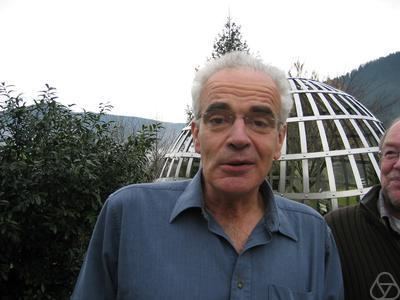Nationality France Institutions INRIA | Name Claude Lemarechal | |
 | ||
Fields Mathematical optimizationOperations researchScientific computing Notable awards Dantzig Prize of SIAM and MPS 1994 | ||
Claude lemar chal
Claude Lemaréchal is a French applied mathematician.
Contents
- Claude lemar chal
- Awards
- Lagrangian duality and nonconvex primal problems
- Bundle methods of descent
- References

In mathematical optimization, Claude Lemaréchal is known for his work in numerical methods for nonlinear optimization, especially for problems with nondifferentiable kinks. Lemaréchal and Phil. Wolfe pioneered bundle methods of descent for convex minimization.
Claude Lemaréchal (now retired) was a senior researcher (directeur de recherche) at INRIA near Grenoble, France.
Awards
In 1994, Claude Lemaréchal and Roger J-B Wets were each awarded the George B. Dantzig Prize. Recognizing "original research that has had a major impact on the field of mathematical programming", the Dantzig Prize is awarded by the Society for Industrial and Applied Mathematics (SIAM) and the Mathematical Programming Society (MPS).
Lagrangian duality and nonconvex primal problems
Soon after joining INRIA (then named "IRIA"), Lemaréchal had the assignment of helping a glass-manufacturer with a problem of scheduling its production, a problem whose first formulation required minimizing a non-convex function. For this non-convex minimization problem, Lemaréchal applied the theory of Lagrangian duality that was described in Lasdon's Optimization Theory for Large Systems. Because the primal problem was non-convex, there was no guarantee that a solution to the dual problem would provide useful information about the primal. Nonetheless, the dual problem did furnish useful information. Lemaréchal's success with Lagrangian dual methods on nonlinear programming problems with nonconvexities interested Ivar Ekeland and Jean–Pierre Aubin, who applied the Shapley–Folkman lemma to explain the Lemaréchal's success. The Aubin–Ekeland analysis of duality gaps considered the convexclosure of a nonconvex minimization problem — that is, the problem defined by the closed convex hull of the epigraph of the original problem. Following Ekeland and Aubin, similar applications of the Shapley–Folkman lemma are described in optimization monographs and textbooks. These developments were catalyzed by Lemaréchal's demonstration that Lagrangian-dual methods were useful on some optimization problems that lacked convexity.
Bundle methods of descent
Lemaréchal's research also led to his work on (conjugate) subgradient methods and on bundle methods of descent for convex minimization problems.
